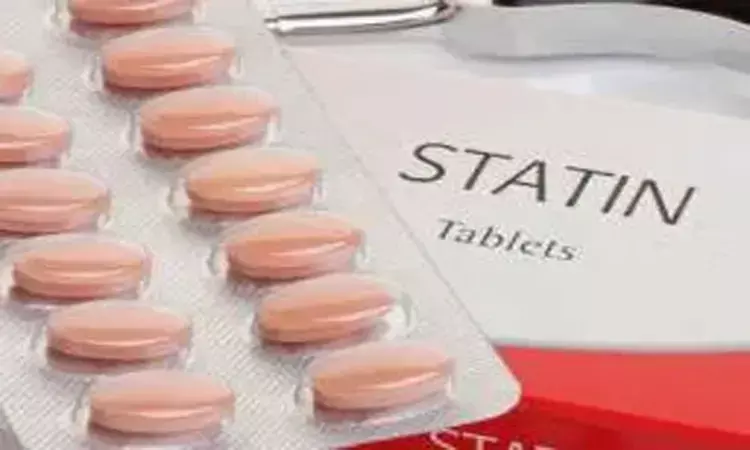- Home
- Medical news & Guidelines
- Anesthesiology
- Cardiology and CTVS
- Critical Care
- Dentistry
- Dermatology
- Diabetes and Endocrinology
- ENT
- Gastroenterology
- Medicine
- Nephrology
- Neurology
- Obstretics-Gynaecology
- Oncology
- Ophthalmology
- Orthopaedics
- Pediatrics-Neonatology
- Psychiatry
- Pulmonology
- Radiology
- Surgery
- Urology
- Laboratory Medicine
- Diet
- Nursing
- Paramedical
- Physiotherapy
- Health news
- Fact Check
- Bone Health Fact Check
- Brain Health Fact Check
- Cancer Related Fact Check
- Child Care Fact Check
- Dental and oral health fact check
- Diabetes and metabolic health fact check
- Diet and Nutrition Fact Check
- Eye and ENT Care Fact Check
- Fitness fact check
- Gut health fact check
- Heart health fact check
- Kidney health fact check
- Medical education fact check
- Men's health fact check
- Respiratory fact check
- Skin and hair care fact check
- Vaccine and Immunization fact check
- Women's health fact check
- AYUSH
- State News
- Andaman and Nicobar Islands
- Andhra Pradesh
- Arunachal Pradesh
- Assam
- Bihar
- Chandigarh
- Chattisgarh
- Dadra and Nagar Haveli
- Daman and Diu
- Delhi
- Goa
- Gujarat
- Haryana
- Himachal Pradesh
- Jammu & Kashmir
- Jharkhand
- Karnataka
- Kerala
- Ladakh
- Lakshadweep
- Madhya Pradesh
- Maharashtra
- Manipur
- Meghalaya
- Mizoram
- Nagaland
- Odisha
- Puducherry
- Punjab
- Rajasthan
- Sikkim
- Tamil Nadu
- Telangana
- Tripura
- Uttar Pradesh
- Uttrakhand
- West Bengal
- Medical Education
- Industry
Updated statement on statin intolerance released by National Lipid Association

USA: The National Lipid Association (NLA) in a recent article published in the Journal of Clinical Lipidology has reported a Scientific Statement on statin intolerance. The article contains a new definition and key considerations for atherosclerotic cardiovascular disease (ASCVD) risk reduction in statin-intolerant patients.
Although statins are generally well-tolerated, statin intolerance is observed in 5-30% of patients contributing to reduced statin adherence and persistence, and a higher risk for adverse cardiovascular outcomes. The Scientific Statement was developed to provide an updated definition of statin intolerance and to inform clinicians and researchers about its identification and management.
Key takeaways from the NLA's scientific statement:
- Statin intolerance is defined as "one or more adverse effects associated with statin therapy, which resolves or improves with dose reduction or discontinuation, and can be classified as complete inability to tolerate any dose of a statin or partial intolerance, with the inability to tolerate the dose necessary to achieve the patient-specific therapeutic objective. To classify a patient as having statin intolerance, a minimum of two statins should have been attempted, including at least one at the lowest approved daily dosage."
- Incidence of statin intolerance (complete or partial) likely ranges from 5-30% and varies with the population studied.
- Statin intolerance may impact patient adherence. When patients demonstrate nonadherence or lack of persistence with statin therapy, clinicians should consider statin intolerance as a potential contributing factor.
- Adverse effects related to statins may include:
- Myalgias, are the most common complaint, and may be described as muscle aches, pains, cramps, fatigue, or weakness; muscle-related complaints may be due in part to the "nocebo" effect, in which anticipation of harm results in the perception of side effects.
- Myopathy, which occurs in 1 out of 10,000 patients, is characterized by unexplained muscle pain or weakness plus creatine kinase (CK) concentration >10 times the upper limit of normal.
- Rhabdomyolysis, which occurs in 1 out of 100,000 patients per year of therapy, and is characterized by creatine kinase (CK) typically >40 times the upper limit of normal; the elevated CK can cause myoglobinuria and acute renal failure; it is potentially life-threatening but usually reversible if detected early and treated appropriately.
- Elevation of transaminase levels elevated blood glucose levels, and rarely, memory loss or confusion.
- Finding a statin regimen that is acceptable to the patient may require switching agents, trying a lower dosage, or use of alternative regimens such as on alternate days. Whenever possible, multiple attempts should be made to achieve statin tolerance, as most patients with reported statin intolerance can tolerate some degree of statin therapy. Complete statin intolerance is uncommon (<5% of patients).
- Statin-related adverse effects may be avoided or mitigated by correcting modifiable risk factors (s) for statin intolerance: hypothyroidism, alcohol use, strenuous exercise, vitamin D deficiency, obesity, diabetes, and drug interactions.
- Drugs known to potentially interact with statins include gemfibrozil, protease inhibitors, amiodarone, calcium channel blockers, azole antifungals, macrolides, immunosuppressants, and colchicine.
- If a patient is unable to reach the therapeutic objectives with lifestyle changes and maximally tolerated statin therapy, then nonstatin therapy may be needed. Nonstatin therapies that have demonstrated reduced adverse cardiovascular outcomes in randomized trials should be favored.
- In order to minimize the duration of exposure to high low-density lipoprotein levels, clinicians may consider initiating nonstatin therapy in high-risk and very-high-risk patients, while continuing attempts to identify a tolerable statin regimen.
Reference:
NLA Scientific Statement on Statin Intolerance: A New Definition and Key Considerations for ASCVD Risk Reduction in the Statin Intolerant Patient. J Clin Lipidol 2022;Jun 9:[Epub ahead of print].
Dr Kamal Kant Kohli-MBBS, DTCD- a chest specialist with more than 30 years of practice and a flair for writing clinical articles, Dr Kamal Kant Kohli joined Medical Dialogues as a Chief Editor of Medical News. Besides writing articles, as an editor, he proofreads and verifies all the medical content published on Medical Dialogues including those coming from journals, studies,medical conferences,guidelines etc. Email: drkohli@medicaldialogues.in. Contact no. 011-43720751


